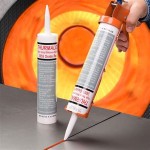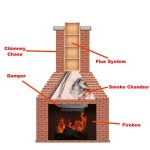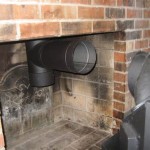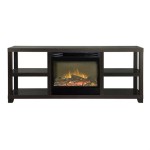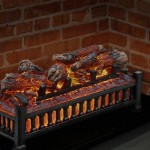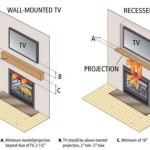Honeywell Fireplace Gas Valve Replacement: A Comprehensive Guide
Fireplaces are a cherished addition to many homes, providing warmth, ambiance, and a focal point for gatherings. However, as with any mechanical component, the gas valve within your fireplace can experience wear and tear over time. When this occurs, it may be necessary to replace the gas valve to ensure safe and efficient operation. This guide will provide a comprehensive overview of Honeywell fireplace gas valve replacement, addressing key considerations and steps involved in the process.
Understanding Honeywell Fireplace Gas Valves
Honeywell is a renowned manufacturer of gas valves, known for their reliability and safety features. Honeywell fireplace gas valves are typically solenoid-operated, meaning they use an electromagnet to control the flow of gas to the burner. When the valve is energized, the solenoid opens, allowing gas to flow. When the valve is de-energized, the solenoid closes, stopping the gas flow. Honeywell gas valves are designed to be compatible with various fireplace models and can be found in both direct vent and vent-free fireplaces.
Common Signs of a Faulty Honeywell Fireplace Gas Valve
Recognizing the symptoms of a faulty gas valve is crucial for timely intervention and preventing potential hazards. Here are some common signs that indicate a malfunctioning Honeywell fireplace gas valve:
- Fireplace fails to ignite: This is a primary indicator that the gas valve is not allowing gas to flow to the burner.
- Intermittent ignition: If the fireplace ignites intermittently, it suggests a problem with the gas valve's ability to maintain a consistent gas flow.
- Delayed ignition: If there is a significant delay between activating the fireplace and the flame igniting, it could be a sign of a partially obstructed gas valve.
- Gas leak: A distinct smell of gas near the fireplace is a serious safety concern and indicates a potential leak from the gas valve.
- Unusual noises: Clicking, hissing, or other unusual noises emanating from the gas valve area are warning signs of a malfunction.
If you notice any of these signs, it is crucial to shut off the gas supply to the fireplace immediately and contact a qualified technician for inspection and repair.
Steps Involved in Replacing a Honeywell Fireplace Gas Valve
Replacing a Honeywell fireplace gas valve is a technical procedure that should only be performed by a licensed and experienced gas technician. The following steps outline the general process involved:
- Shut off gas supply: Isolate the gas supply to the fireplace by turning off the main gas valve.
- Remove the old valve: Disconnect any electrical wiring and gas lines connected to the old valve. Carefully remove the valve from the fireplace assembly.
- Install the new valve: Install the new Honeywell gas valve, ensuring proper alignment and secure connections.
- Reconnect gas lines: Connect the gas lines to the new valve, using appropriate fittings and tightening them securely.
- Reconnection electrical wiring: Reconnect any electrical wiring to the new valve, following the manufacturer's instructions.
- Gas leak test: After reconnecting the gas lines, a thorough gas leak test is essential to ensure there are no leaks. This involves using a soap bubble solution to check for gas leaks at each connection point.
- Test ignition: Once the gas leak test is completed, you can cautiously attempt to ignite the fireplace and check for proper operation.
It is important to note that these steps are intended as a generalized overview. Specific procedures and safety precautions may vary depending on the make and model of your fireplace. Always refer to the manufacturer's instructions for your specific fireplace model before attempting any repairs.
Safety Precautions for Honeywell Fireplace Gas Valve Replacement
Replacing a gas valve is a potentially hazardous procedure. Due to the involvement of flammable gas, it is crucial to prioritize safety throughout the process. Here are some essential safety precautions:
- Work in a well-ventilated area: Ensure adequate ventilation to prevent gas buildup in the room.
- Never work alone: Have someone nearby to assist in case of an emergency.
- Use appropriate tools: Employ only high-quality tools that are designed for gas line work.
- Avoid using open flames: Avoid using any open flames or sources of ignition while working on the gas valve.
- Be mindful of electrical hazards: Be cautious of electrical wires and connections. Always disconnect power to the fireplace before working on the gas valve.
If you are unsure about any aspect of the gas valve replacement process, it is strongly advised to contact a qualified gas technician. They have the specialized knowledge and equipment to ensure the job is completed safely and correctly.

20002045 Valve Gas Ng Honeywell Rfn Fireplaceparts Com

67l0101 Lennox Gas Valve Assy Nat Honeywell Fireplaceparts Com

Maj20010680 Valve Replacement Kit Honeywell To Sit Gas Fireplaces Lp

Majestic Direct Vent Fireplace Propane Gas Honeywell To Sit Replacement 10008893

Montigo Honeywell Gas Valve Natural Rgc1004 Friendly Fires

Fireplace Valve Honeywell Resideo Smart Gas Sv9501m2528 Diy Part Center

Fire By Design Sv9501 Honeywell Smart Valve

Honeywell Vs8510 Manual Manualslib

Harman Gas Fireplace Sit Valve Ng 230 0710

Fireplace Millivolt Honeywell Electronic Ignition Valve Kit For Use With A Wall Switch High Capacity 270k Btu
Related Posts

